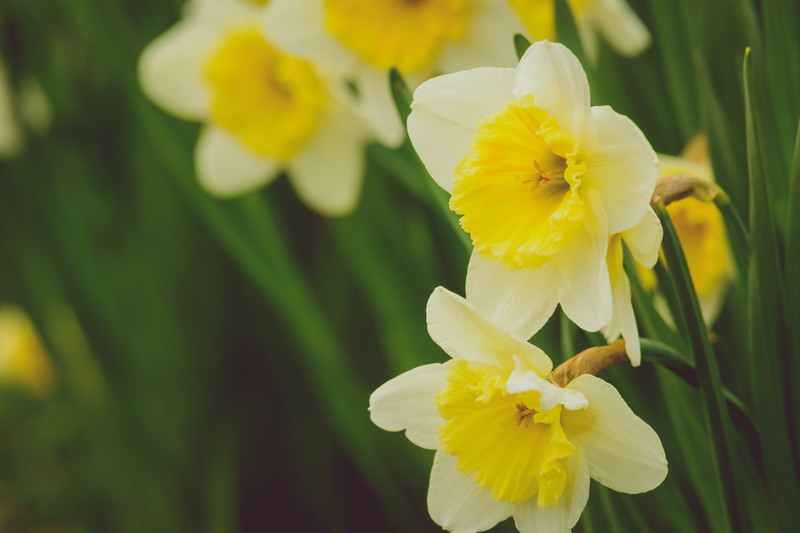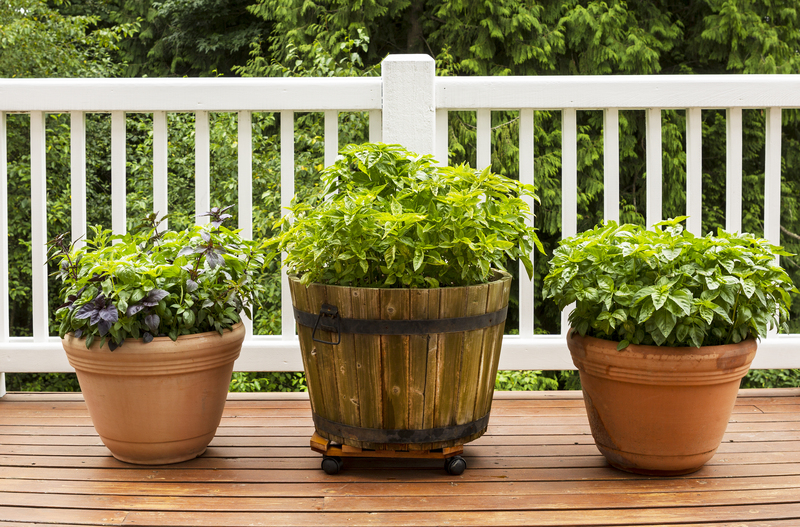Planting the Seeds for a Dog-Loving Green Space
Posted on 04/07/2025
A thriving green space can rejuvenate communities, foster human-animal bonding, and elevate the well-being of both people and pets. Planting the seeds for a dog-loving green space is more than landscaping--it's about nurturing a haven where canine companions and their owners coexist harmoniously with nature. Whether you're dreaming of a neighborhood dog park, aiming to reimagine your backyard, or managing city green areas, designing spaces tailored to dogs while promoting ecological sustainability is an inspired act.
Why Create Dog-Friendly Green Spaces?
Why do we need specialized, dog-friendly green spaces? As more people become pet parents, the demand for inclusive, safe, and eco-conscious outdoor areas has soared. Here are a few compelling reasons to consider planting the seeds of a dog-welcoming landscape:
- Enriching canine socialization: Dogs thrive in environments where they can interact, play, and exercise off-leash, which is crucial for their behavioral and emotional well-being.
- Fostering community connections: Parks and green areas designed for dogs bring together like-minded individuals, cultivating friendships and healthy lifestyles for humans and pets alike.
- Promoting environmental awareness: By integrating native plants and sustainable landscaping, dog-friendly spaces can serve as models for biodiversity and responsible land management.
- Enhancing property value: Access to thoughtfully designed green spaces boosts the desirability and value of residential neighborhoods.

Planning Your Dog-Loving Green Space: Key Considerations
Designing the ideal dog-friendly garden or canine green space goes beyond installing a fence or scattering a few toys. Here is a comprehensive approach to planning a lush, sustainable, and functional oasis for dogs and their owners:
Location and Layout
Start by thinking strategically about the location. Urban parks, suburban backyards, or community plots all present unique opportunities and challenges. Consider:
- Accessibility: Is the space easy to reach for residents and their pets?
- Visibility: Good sightlines ensure safety and supervision, whether in a public park or private yard.
- Separable zones: Plan for sections such as play areas, quiet retreats, and agility courses to accommodate varied dog personalities and activity levels.
Sustainable Landscaping Choices
An enduring dog-loving garden means making eco-friendly plant and material choices:
- Native plants: Choose resilient, non-toxic species that support local wildlife and withstand canine foot traffic.
- Drought-resistant grasses: Select ground covers like buffalo grass, clover, or perennial rye to reduce water use and soil erosion.
- Mulch and pathways: Use shredded bark, pea gravel, or decomposed granite for paw-friendly trails that don't overheat or harm dogs' feet.
Safety Matters
Every dog-focused green space must prioritize safety--both for pets and plants:
- Secure fencing: Install reliable enclosures with double gates to prevent escapes. Consider fence heights based on breed sizes.
- Shade structures: Trees, pergolas, or sun sails can protect dogs from heatstroke and enhance comfort.
- Non-toxic flora: Avoid dangerous plants such as azaleas, sago palm, or foxglove, which can harm dogs when ingested.
Essential Features for a Dog-Loving Green Area
The most successful dog-friendly green spaces incorporate a blend of comfort, utility, and recreation for both pets and people. Key features to include:
- Water stations: Provide dog-height drinking fountains or standing bowls to ensure hydration during play.
- Agility equipment: Balance beams, tunnels, ramps, and jumps offer physical exercise and mental stimulation for dogs.
- Waste stations: Convenient, well-stocked waste bags and bins promote clean, healthy environments.
- Seating areas: Benches under shade trees give owners a comfortable spot to supervise and socialize.
- Interactive landscaping: Mounds, logs, and sensory gardens featuring fragrant, pet-safe herbs like rosemary or thyme engage dogs' senses.
- Lighting: Solar or LED path lights enhance safety for dawn or dusk visits.
Choosing Dog-Safe Plants and Materials
Pet-Proof Plant Picking: What to Grow and What to Avoid
Selecting the right greenery is fundamental. Here are plants that thrive in dog-loving green spaces:
- Bamboo: Fast-growing, non-toxic, and perfect for creating lush screens.
- Ornamental grasses: Fountain grass, blue fescue, and feather reed grass are hardy and resilient to paws.
- Sunflowers and marigolds: Bright, non-toxic blooms that attract pollinators and tolerate a bit of roughhousing.
- Dog-friendly herbs: Parsley, basil, and mint are safe for chewing and enhance aromatic diversity.
Dangerous plants to avoid in pet-centric landscapes:
- Sago palm
- Oleander
- Foxglove
- Azalea
- Daffodils
- Tulips
- Lilies
- Autumn crocus
*Always check trusted sources for local plant toxicity and consult your veterinarian if uncertain!*
Paw-Friendly Materials
Traditional lawns can suffer under dog activity, so blend hardscapes and groundcovers:
- Pea gravel, crushed granite, or bark chips for durable walkways and play zones
- Composite decking or flagstone patios for low-maintenance seating or gathering areas
- Artificial turf as a resilient, easy-care alternative (ensure it's toxin-free and cool underfoot)
- Moss or clover groundcovers add green texture and endure traffic well
Fostering a Dog-Friendly Ecosystem
Biodiversity and Balance
Planting the seeds for a dog-loving green space is also an investment in local biodiversity. How can pet-centric landscaping support the ecosystem?
- Pollinator patches: Dedicating even a small section to wildflowers or native shrubs can provide essential habitat for bees, butterflies, and birds.
- Low-input maintenance: Organic mulching, rainwater harvesting, and composting minimize chemicals and water use, keeping spaces clean and green for all inhabitants.
- Integrated pest management: Beneficial insects and physical barriers offer safer alternatives to harsh pesticides, protecting both pets and the environment.
Natural Play Features
Dogs relish more than just open fields. Enhance their environment with:
- Digging zones: Install sandboxes or loose soil sections where dogs can satisfy their urge to dig without tearing up garden beds.
- Log piles and boulders: These natural elements encourage climbing, sniffing, and exploration, stimulating dogs' minds and bodies.
- Wading pools or splash pads: Water-loving pooches appreciate shallow pools--just remember to change water frequently for cleanliness.
Encouraging Community Engagement
The most impactful dog-loving green spaces flourish when nurtured by a community of enthusiastic stakeholders. How can you fuel engagement and stewardship?
- Volunteer-driven maintenance days: Organize seasonal cleanups, planting parties, or educational seminars about dog health and sustainable landscaping.
- Pet etiquette signage: Clear, friendly reminders help encourage responsible pet ownership and harmonious use of the space.
- Fundraising and sponsorships: Local businesses, veterinarians, and pet supply stores might support dog park enhancements or donate benches and banners.
- Special events: Host dog training workshops, adoption days, or pet-friendly festivals to build camaraderie.
DIY Ideas for Homeowners: Making Your Yard Dog-Loving and Green
Not every dog needs a dedicated public park--your own garden can become a sanctuary for both pets and pollinators. Here are DIY tips for a dog-approved, eco-conscious backyard:
- Create a "doggy path": Dogs often pace the same routes. Formalize these trails with mulch or stone, so your lawn stays intact and paws stay cleaner.
- Install a digging pit: Designate a dig zone, fill with loose soil or sand, and periodically hide dog-safe treats or toys for enrichment.
- Grow an herb spiral: Border this with non-toxic herbs and use rocks or logs for structure. It's beautiful, functional, and safe for curious noses.
- Compost dog waste safely: Specialized pet-waste composters can break down waste and keep lawns cleaner--just don't use finished compost on edible plants.
- Privacy screens: Use tall, dense shrubs like privet, boxwood, or bamboo to create green barriers, reducing noise and giving scaredy-dogs a sense of security.
Remember: Enrichment prevents boredom. A diverse, interesting yard for your dog is a happier, healthier space for all.
Maintaining Your Dog-Loving Green Space for the Long Term
A flourishing dog-friendly garden or public park requires continued care:
- Inspect fences and gates regularly for wear, gaps, or damage.
- Monitor plant health: Remove toxic volunteer plants and replace worn-out or trampled greenery with fresh, sustainable choices.
- Aerate the soil in high-traffic areas to prevent compaction and keep turf healthy.
- Encourage responsible use: Rest messaging on signage, regular social media updates, or community newsletters.
- Rotate play areas: Allow overused zones time to recover by temporarily re-routing paths or using portable barriers.
Eco-Friendly Upkeep Tips
- Apply organic fertilizers; chemical alternatives may harm sensitive pets and degrade soil quality long-term.
- Mulch regularly to retain moisture and prevent weeds without introducing toxic dyes or additives.
- Harvest rainwater to irrigate landscape beds and reduce municipal water use.
The Social and Emotional Impact of Dog-Loving Green Spaces
Beyond physical health, a beautiful, pet-inclusive landscape enhances the emotional fabric of a community. Studies have shown people living near dog-centric green spaces report higher happiness, stronger neighborly connections, and reduced stress levels.
- Therapeutic value: Watching dogs play or walking in a lush environment lowers cortisol and boosts mood for everyone, even those without pets.
- Social bridges: Leash-free parks encourage spontaneous conversations and friendships across generations and backgrounds.
- Intergenerational bonding: Children learn responsibility, compassion, and stewardship by caring for pets and nature alike.

Conclusion: Cultivating a Legacy of Love and Sustainability
Planting the seeds for a dog-loving green space is a visionary act--connecting animal care, environmental stewardship, and community life. From private gardens to city parks, these living ecosystems serve as playgrounds, restorative sanctuaries, and classrooms for sustainable living.
By focusing on native plants, eco-friendly materials, and inclusive design, you can transform any outdoor environment into a vibrant, dog-friendly oasis--one that benefits pets, their people, and the planet.
Your commitment today sows the roots of a greener, more joyful tomorrow for every wagging tail and all who cherish them.
Frequently Asked Questions: Planting the Seeds for a Dog-Loving Green Space
- What are the best ground covers for dog-friendly green areas?
Clover, buffalo grass, ryegrass, and creeping thyme are hardy and paw-safe, while pea gravel and decomposed granite work well for play areas. - How do I keep a dog park clean and safe?
Install waste stations, provide sanitation reminders, and use regular volunteer clean-up shifts. Avoid toxic chemicals and perform frequent inspections for hazards. - How can I encourage responsible dog owner behavior?
Visible, positive signage, community guidelines, and providing the right amenities (bags, bins, water) foster good habits.
Start planting the seeds for a dog-loving green space today, and watch your community, landscape, and beloved pets flourish together!

